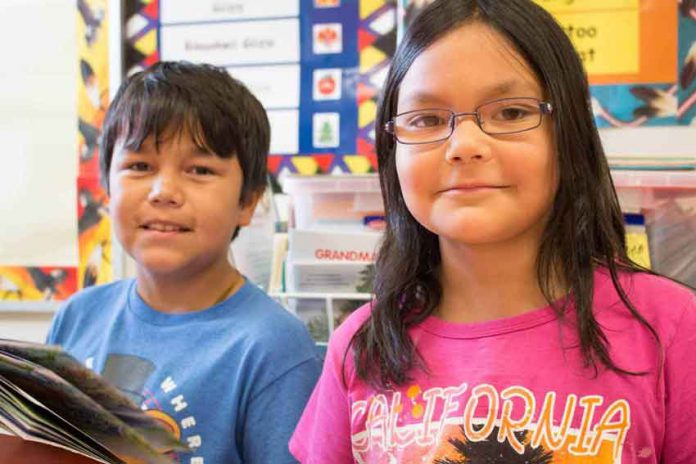Suitable housing and higher household income during childhood are associated with high school completion and higher education among First Nations, Métis and Inuit young adults.
Statistics Canada reported on April 6, 2023 that findings from a new study show that suitable housing and higher household income during childhood are associated with high school completion and higher education among First Nations, Métis and Inuit young adults.
Stats Can says, that using a longitudinal dataset linking data from the 2006 Indigenous Peoples Survey with those from the 2016 long-form census, the study examines several socio-economic factors among First Nations children living off reserve, Métis and Inuit children, aged 8 to 14 years in 2006, that were associated with high school completion or above 10 years later, in 2016.
In addition to socio-demographic and household factors, the analysis examines the impact that having knowledge of (i.e., being able to understand or speak, or both) an Indigenous language and familial residential school attendance had on educational attainment. Findings are presented by sex.
High school completion is an important stepping stone for pursuing post-secondary education, which, in turn, provides better opportunities in the labour market and can lead to higher incomes.
The study says it is essential to gain a better understanding of the social determinants that favour higher educational attainment among Indigenous children and youth to support the development of effective educational policies.
Indigenous children aged 11 to 14 years in 2006 more likely to have completed high school or higher education by 2016 compared with younger counterparts
First Nations children living off reserve, Métis and Inuit children aged 11 to 14 years in 2006 were more likely to have completed high school or higher by 2016 than those aged 8 to 10 years in 2006. Among First Nations children aged 11 to 14 years in 2006, close to three-quarters (72.3%) had completed high school or higher by 2016 compared with just over half (55.1%) of those aged 8 to 10 years.
Similar findings were observed among Métis children, where a larger proportion (79.4%) of those aged 11 to 14 years in 2006 had completed high school or higher by 2016 compared with their younger counterparts (62.1%). Among Inuit children, over half (52.9%) of children aged 11 to 14 years in 2006 had completed high school or higher 10 years later, while about one-third (34.2%) of those aged 8 to 10 years had.
These findings are aligned with previous research, which suggests that Indigenous people do not all have a direct path to high school completion. Some Indigenous people may leave school temporarily, but later return and complete high school or an equivalency program.
For Indigenous children, living in suitable housing in childhood associated with high school completion or higher
Living in suitable housing was shown to be a significant factor associated with educational attainment for Indigenous children. Suitable housing indicates if the house has enough bedrooms for the size and make-up of resident households. Just over two-thirds (68.2%) of First Nations children living off reserve who were living in suitable housing in 2006 had completed high school or higher by 2016, while half (49.6%) of those who lived in unsuitable housing had. A similar trend can be observed for Métis (75.4% for those in suitable housing; 55.8% for those in unsuitable housing) and Inuit (54.2% for those in suitable housing; 32.4% for those in unsuitable housing) children.
Indigenous children living in higher income households more likely to complete high school or higher education compared with those living in lower income households
Across all three Indigenous groups, household income had an important impact on the academic success of children. First Nations children living off reserve whose household income was in the fourth (the highest) (76.3%) and third (73.6%) income quartiles were more likely to have completed high school or higher education compared with children living in the first (the lowest) income quartile (53.9%). Similarly, 86.0% of Métis children with household income in the fourth quartile had completed high school or higher education compared with 63.7% of those whose household income was in the first quartile. Inuit children in households in the second (42.5%), third (48.6%) and fourth (58.3%) income quartiles were more likely to complete high school or higher education than those in the first quartile (21.2%).
Better academic performance in childhood associated with high school completion or higher education among First Nations boys and Métis girls
Perceived academic performance during childhood was another important factor that was associated with high school completion or higher educational attainment among First Nations and Métis children, with differences seen by sex. Among First Nations children, 72.2% of boys whose perceived academic performance during childhood was “very good” had completed high school by 2016 compared with 44.3%E of those whose performance was “average,” with no significant differences seen for girls. The reverse trend was seen among Métis children. While 82.7% of girls whose perceived academic performance was “very good” had completed a high school diploma or higher by 2016, 61.7% of those with an “average” performance did the same.







